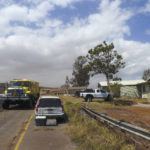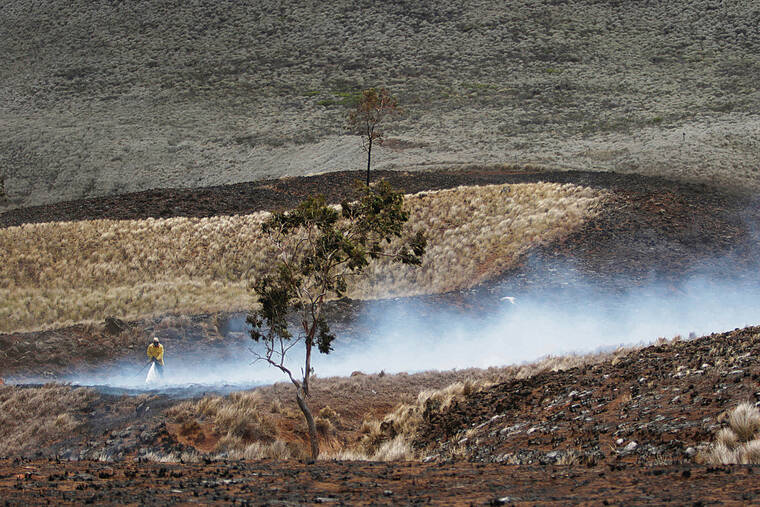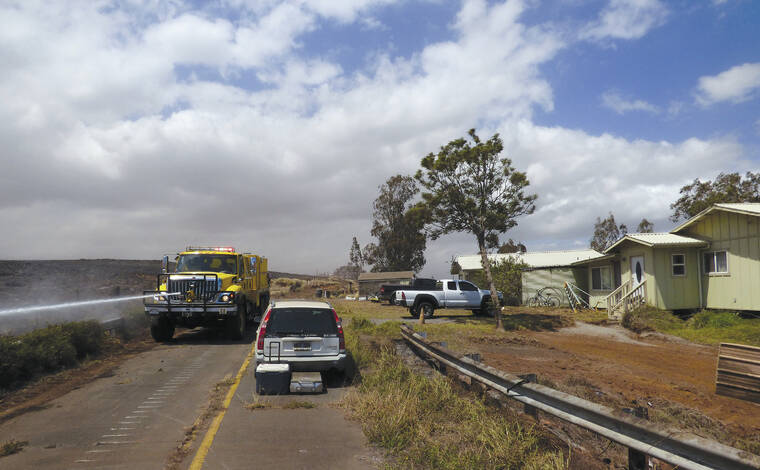Federal funding is headed to Hawaii County to help offset expenses incurred last summer battling the Big Island’s largest wildfire in history.
The Hawaii Emergency Management Agency announced Monday that the Federal Emergency Management Agency had authorized the reimbursement of 75% — or $886,000 — of the nearly $1.25 million spent by the Hawaii Fire Department as part of the multi-agency effort to quash the South Kohala fire.
“The county took a hit last year — and this doesn’t even cover all the money that was spent — it just helps us with that bill,” said Fire Chief Kazuo Todd.
The Mana Road fire broke out July 30, 2021, and scorched over 40,000 acres, destroying two homes and forcing the evacuation of Waikoloa Village, before containment was reached on Aug. 6, 2021. Investigation determined the fire was ignited during field work on private land.
According to Hawaii County, 140 firefighters, 70 National Guardsman, 52 fire apparatus, nine helicopters, 27 bulldozers and 10 private companies took part in battling the fire. Federal, state, county and volunteer assets all played a role.
The federal funding authorized for Hawaii County comes via a FEMA-administered Fire Management Assistance Grant, which is designed to help restore local government funds that were expended during a fire response. It covers costs such as expenses for equipment use, materials, supplies, and mobilization and demobilization activities attributed to fighting an eligible fire, according to the Hawaii Emergency Management Agency.
Todd said equipment use was the biggest cost incurred during the fire with over $900,000 of the $1.2 million expended going toward contracting bulldozers and operators to cut the firebreaks that allowed firefighters to contain and ultimately extinguish the blaze. He estimated about $670,000 of the $886,000 reimbursement would go toward replenishing the accounts used to pay for the service.
“The fire department doesn’t really see any of this. It’s not like any money is going to come into my budget — it just goes into Finance’s coffers,” Todd explained. “I didn’t have the money in my budget to hire those dozers to begin with; we did what we needed and then Finance later in the year helped us with our budget to make it balance — the money goes back to whatever fund kept us going.”
Though it’s now the wet season, which typically runs September to April for much of the island, Todd urged residents to be cautious when doing activities that could spark a fire — particularly in the wildland urban interface, which is a zone of transition between wilderness and land developed by human activity.
“I understand things have to happen to get things done out in the field but especially during times where the environment is especially dry, these action make a big difference in the community and livelihood of others. We have to be cognizant of all the ways that our actions can affect others and be careful out there,” he said. “If we’re going to be doing things that could potentially start a fire make sure we bring with us the kind of equipment needed to wet down or suppress with us while we’re doing that work.”
According to the U.S. Drought Monitor, 77.4% of Hawaii Island was experiencing drought conditions as of Oct. 11, unchanged from the week prior. A year ago just 35% of the island reported such conditions.
Most of North Kona was experiencing no drought at that time with South Kona seeing abnormally dry conditions. Meanwhile, most of East Hawaii was seeing severe drought conditions. A patch of extreme drought was noted on the Maunakea’s slope east of Waimea.









